As an Amazon Associate I earn from qualifying purchases.
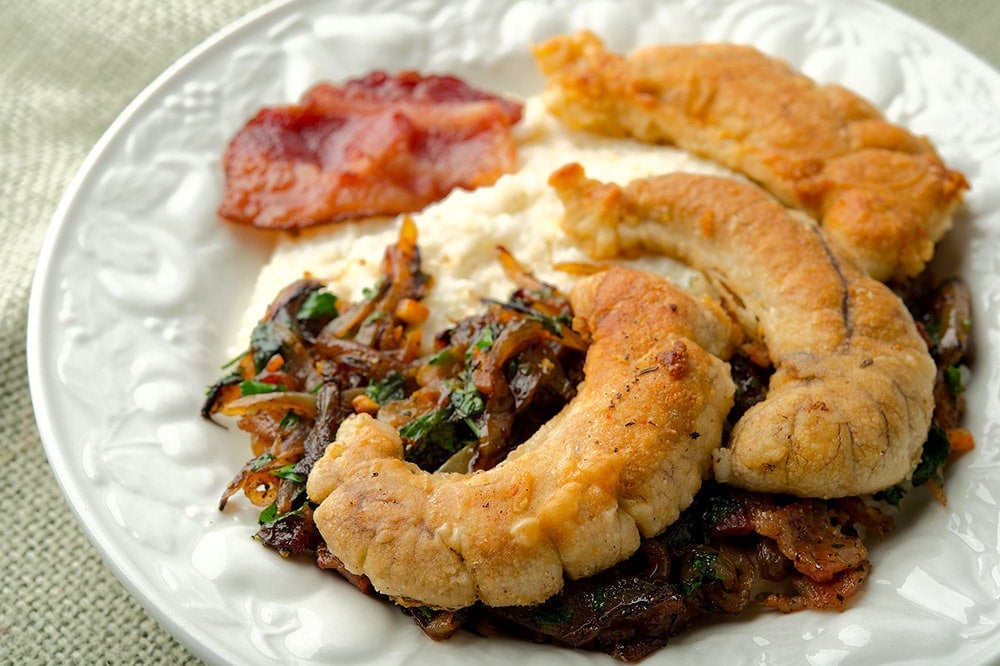
Shad roe is one of the few fish eggs to be loved more than for the fish it comes from.
Keep in mind that I am talking about two specific species of shad here, the American shad, Alosa sapidissima, and the hickory shad, Alosa mediocris. While the meat of the American shad is indeed wonderful it has so many bones you need to know some tips and tricks for eating shad, or be a wizard with a fillet knife. The meat of a hickory shad is as its Latin name suggests: mediocre. Not so the roe of either species.
If you have never eaten fish eggs, they are remarkably un-fishy for the innards of a fish, even of a giant herring like a shad. Perfectly fresh, they are light, almost fluffy and scrambled eggy, although firmer — indeed, shad roe is often broken up and served mixed with scrambled eggs; hot egg-on-egg action, this.
Shad have been sought after for their roe for millennia. Native Americans enjoyed this fish, roe and all, and a similar species runs the rivers in Europe. Obviously only female fish have roe, usually two or three sacs. Males have milt, or “soft roe,” large white sperm sacs that are said to be creamy when cooked. I don’t know, as this is a line I choose not to cross.
Roe in most fish is edible, with some notable exceptions like roe from a cabezon in the Pacific, or of the freshwater gar. A few roes, like that of the striped bass, just taste wretched.
One of my favorite books ever written about fish, A. J. McClane’s The Encyclopedia of Fish Cookery, lists the following roes as edible and tasty: crabs, lobsters, sea urchins and scallops; herrings of all varieties, salmon, trout, flounders of all sorts, mullet, sturgeon, Pacific barracuda (not Atlantic barracuda), cod, haddock, flying fish, smelt, tuna, mackerel, paddlefish, lumpfish, carp, whitefish, cisco, tarpon, bonefish, weakfish and mahi mahi.
I happen to know that yellow and white perch roes are wonderful, too, and I am certain there are plenty of other tasty roes out there. If you know of one, let me know in the comments section, OK?
Shad roe, like most fish roe, is a springtime deal. you can get shad roe as early as late February from Florida, and as late as July from here in NorCal or in the Columbia River, where shad runs are late. Other roes have different seasons, and a few, like Great Lakes whitefish, are a late fall-early winter thing.
If you are catching your fish, you need to know what a good roe looks like. Roe can be underripe, ripe or overripe. Underripe roe is obviously underdeveloped, small and dry(ish). Ripe roe just looks right, with decent sized sacs and developed eggs. Overripe roe is bloated and watery.
In the image below, the roe on the left is perfect, the one on the right is overripe.
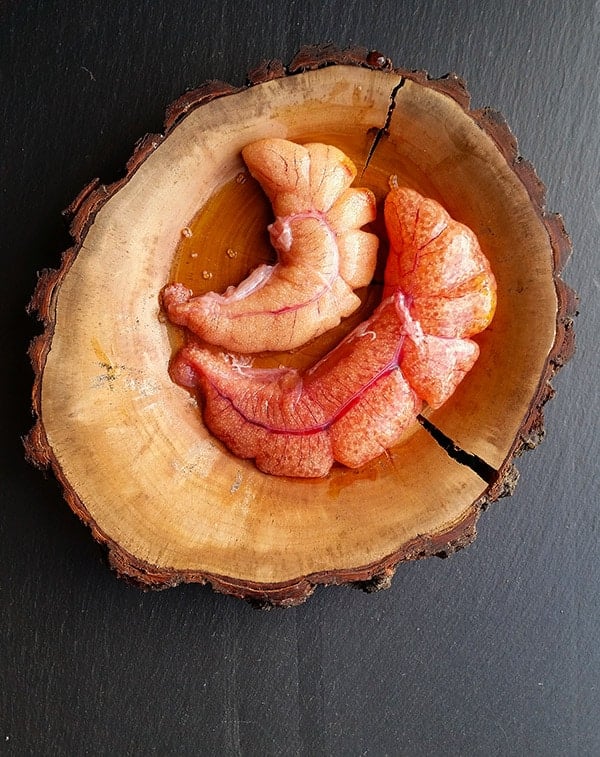
Underripe roes are fine, and in some cases, like in salmon, are better cooked like shad than separated into caviar. Overripe roes are best salted down to make bottarga, a dry cured roe that is shaved onto pasta. It’s nice, if you like fishy things.
How you cook them varies. For the most part, if the individual eggs are large, you make caviar out of them. I have a tutorial on how to make caviar here. With smaller eggs, like shad roe, you cook the whole sac.
Some people par-cook them in broth or water before browning them. I have done this and it works, but you can very easily overcook a roe this way. My advice is to only par-cook roes that are thicker than about 1 1/2 inches. And when I say par-cook, I mean simmer very gently. Do not boil.
Eggs have lots of moisture in them, so be prepared for it to pop a little as you cook your roe in hot bacon fat or some other oil. Keep this to a minimum by cooking roe like bacon: Slowly, at a nice, calm sizzle.
Dusting in some sort of flour is a must, as this dries the surface and allows the roe to brown better. What sort of flour is up to you. I’ve used both wheat and non-wheat flours with good success. I especially like chickpea flour for its color and flavor, so there’s a nice gluten-free option for those so inclined.
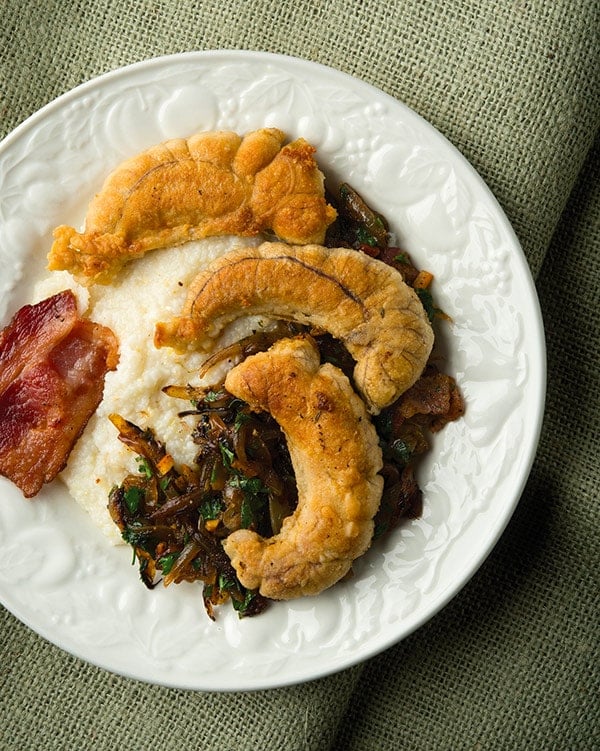
Shad roe and bacon is a classic combination I see no reason to mess with.
In Virginia, I used to eat obscene amounts of blueback herring and hickory shad roe with bacon and grits for breakfast every spring when the herring and shad were running. Now, apparently, the herring runs are too small to fish, which is sad. So you have salty, porky bacon. Firm-yet-fluffy roe.
Grits are there for substance, and because they are a part of a Southerner’s balanced breakfast. You could do toast or whatever makes you happy. You need something herby and something tart to brighten it all up.
Back in Virginia, my choice was always lemon and chervil, but here in NorCal, the chervil is long gone, so I go with parsley or even basil. Lemon is key, but limes, even grapefruit or vinegar are good alternatives. And if you make the caramelized onions in this recipe, a splash of Worcestershire in them will sub in for the lemon nicely.
So. Next time you catch some fish and find roe inside, don’t toss it (unless you are gar or cabezon fishing). Give it a go, and I am betting you will be glad you did.
Shad Roe with Bacon and Grits
Ingredients
- 2 tablespoons kosher salt
- 1 pint cold water
- At least 1 roe sac per person
- 1/4 pound bacon
- 2 onions, sliced root to tip
- 1/2 teaspoon thyme
- 2 teaspoons honey (optional)
- 1 cup grits
- Salt and black pepper
- 3 tablespoons unsalted butter
- Flour for dusting
- 2 tablespoons chopped fresh parsley
- Lemon juice to taste
Instructions
- Brine the shad roe first. Dissolve the salt in the cool water and submerge the roes in the brine for at least an hour, and up to 4 hours. The larger the roe sacs, the longer you will want to brine. I prefer 2 hours for shad, 1 for herring.
- About 45 minutes before you want to cook the roe, crisp the bacon slowly. Remove from the pan (eat a slice, you earned it), and set the bacon aside. Leave about 3 tablespoons of bacon fat in the pan to cook the onions. Caramelize the onions in the bacon fat by cooking them over medium-low heat for 20 to 35 minutes, stirring occasionally. About 15 minutes into this process, add the thyme, a pinch of salt, and the honey if you are using it. When the onions are about done, chop up some of the bacon and add it to the pan.
- While the onions are cooking, bring 4 cups of water to a boil in a pot, add a healthy pinch of salt, and sprinkle in the grits. Stir well to remove any lumps, then drop the heat to medium-low and cook the grits, stirring frequently, until they are smooth, about 20 minutes. Stir the unsalted butter into the grits and keep them warm.
- To finish the dish, either get another pan or set the onions aside and wipe out the existing pan. Remove the roes from the brine and dust in flour. Add at least 3 more tablespoons of bacon fat to the pan (add some butter or oil if you are short, but you shouldn't be), and brown the roes over medium heat. Normally this takes about 5 to 8 minutes total, and remember that it's better to have slightly underdone roe than roe that's been cooked to hell.
- Serve everyone some grits, with a piece of bacon on the side. Add some lemon juice and the chopped parsley to the onions and put some on top of the grits, grind black pepper over everything and give everyone some roe. Lemon wedges on the side is a nice touch.
Nutrition
Nutrition information is automatically calculated, so should only be used as an approximation.

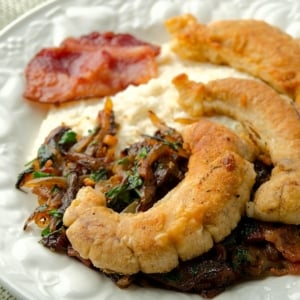
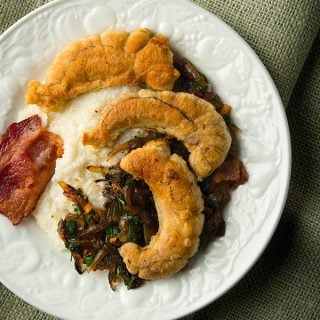
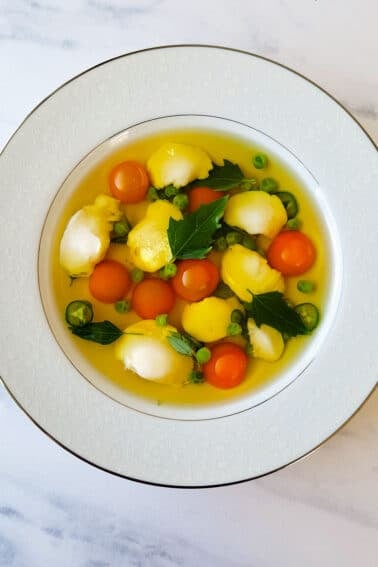
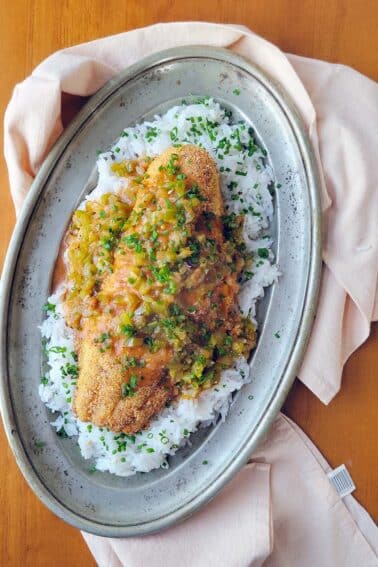
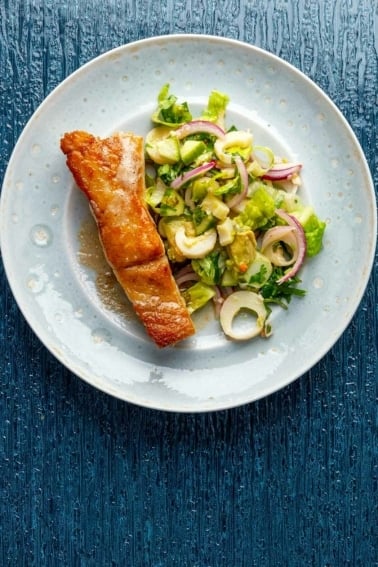
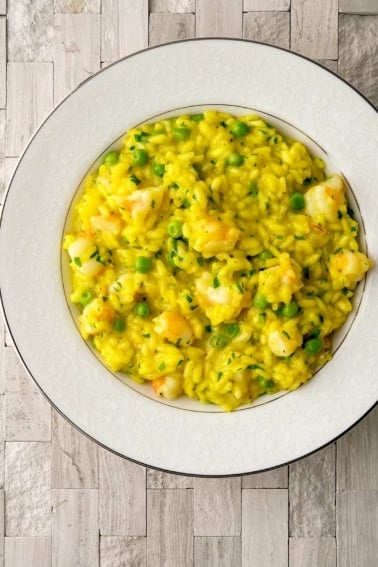
Fantastic recipe. This recipe inspired me to try eating roe a few years ago and now it is a spring time tradition I look forward to.
We cooked sheepshead roe fresh from an Edisto Island, SC creek- really good! Thanks for the recipes!
Love the concept and will have to try it now that the season is back.
Always done something very similar here in Maryland. Never thought to brine the sacs, but a great idea. We would always prick the sacs before sauteing to prevent them from popping. Add a mess of sauteed greens, skip the grits and serve something like that for supper. Less is more and really taste the roe.
Thanks.
Made this last night using Walleye roe, it turned out AMAZING, no fishy flavor, it actually tasted like chicken with a grits texture. So good! Thanks Hank!
Hank, I live on the Eastern Shore of Virginia and discovered speckled trout roe cooked in the same manner is delicious. Have two of your books, love the blog, and really enjoying the Mexican rift!
One of these days you might want to take the plunge and try the milt. I’ve had it from chum and pink salmon and found it to be delicious. It has the texture of creamy oysters except without the chewy bits. Also has a similar flavor to oyster but much, much milder. The chum milt has more flavor and the pink milt is more mild. I’ve only dredged it in flour and fried it. I was on here to see if I could get a new idea on how to cook it from you but I’m out of luck! ?
Why do you brine the roe?
Polly: To season it and to help it firm up.
Hi Hank, I’ve found Wondra works better than than regular flour when cooking shad roe.
Pam: Good tip, thanks!
Hank, I can’t find any info about shad roe “shelf life”. How long will a nice ripe skein last in the fridge? Do you freeze? I’m fishing the Columbia, so literally drowning in Shad and can’t eat them fast enough!
Also, delicious recipe…
Trevor: About a week in the fridge. It doesn’t freeze well IMHO.
I vote for caramelizing the onions and using the bacon grease/onion oil for frying the roe. The added onion flavor would be nice.
So glad to see you make your grits with water only. We have so many know-it-all chefs who come down South from up North and think they can make grits better than we can…by turning them into a kind of bastard cream of wheat. Yuck. The only dairy that belongs in grits is butter.
Smallmouth bass roe and white sucker roe are both good.
I have an egg sac from a lake trout caught in Canada a couple weeks back (it’s in the freezer). I don’t think it was overripe, but I’m not sure if/how freezing it will affect the texture. I’m thinking of salting it since I only have the one; any advice or preferred methods? Thanks everyone!
Last year, I learned that trout roe is edible. I can’t believe I tossed out all that trout roe over the years because “I didn’t know”. A totally different topic, sort of, one of these years I’m determined to beat the critters (possum, raccoon?) to the snapping turtle eggs that the snapping turtles lay along the edge of my pond. This year only one egg managed to evade being eaten by the critters. So, I reburied it.
Roe from both panfish (bluegill, redear, etc.) and crappie is really good. The roe sack from a big slab crappie looks almost exactly like the pics above. You have to be careful cleaning panfish. They’re so small it’s easy to puncture the sacks. I like to dust them with yellow cornmeal and fry them in the same oil as the fillets.
I’ve also tried catfish roe. Just frying it didn’t work so well. The individual eggs are larger, and they got kind of hard after cooking. The eggs from a 4-5 lbs. channel cat are big enough I imagine you could make caviar with them.
A few more roe suggestions that I’ve tried recently:
1. Burbot – mostly caught through the ice when they come in shallow to spawn in late winter, so they usually have roe. Roe can be cooked like shad, I’ve also tried making a pate type thing out of the roe and large livers poached and them mashed together with salt and pepper – nothing fancy just an experiment but it turned out surprisingly good.
2. Cusk – the saltwater variety. Similar to burbot.
3. Atlantic Pollock – late fall spawners can be caught in big numbers off of the few Gulf of Maine party boats that are still running. These tend to be good sized fish 5-20 lbs with big roe sacks. Most fishermen ignore the roe, so you can hang out at the filet table on the way back from the fishing grounds and trim the roe out of the racks and fill buckets on a good trip. Great for bottarga, should be good for fresh cooking too but I haven’t tried this yet due to large size of the roe sacks.
I’ve eaten plenty of fluke and flounder roe, small, but put enough of them together…delicious!
I’ve eaten bluegill and bass roe both. mostly cured i.e. bottarga, but also fresh and they are both fine.
Anybody ever had bluegill roe? I catch a lot of females with roe in the spring, but have never tried eating it (only recently realized what that orange sac was!)
Could you use large or small mouth bass roe? And could you sub in cream of wheat for grits (hard to find grits in Ontario)?
Steve: Not sure, but I bet you could. And no on the cream of wheat. Go with polenta instead.